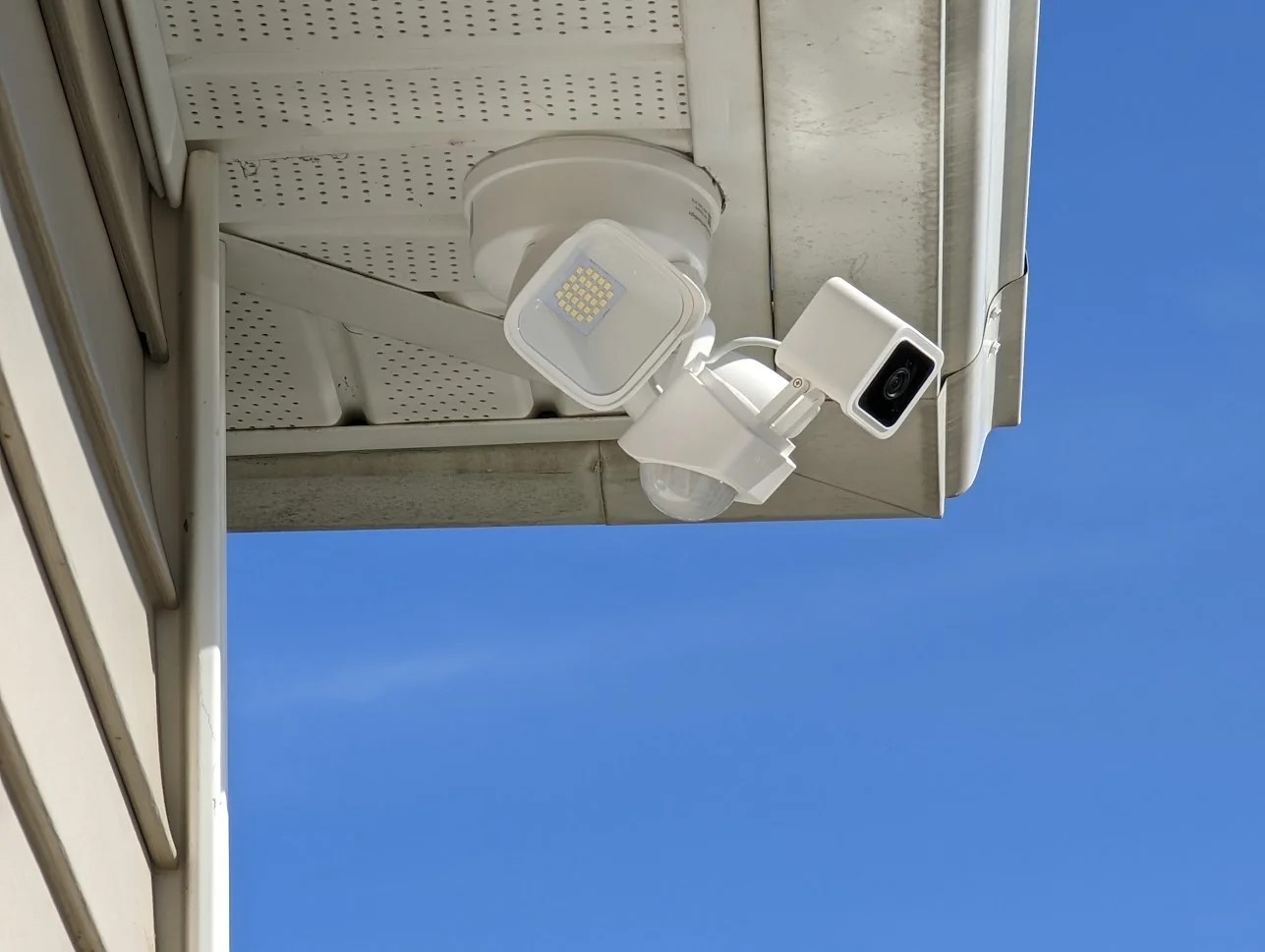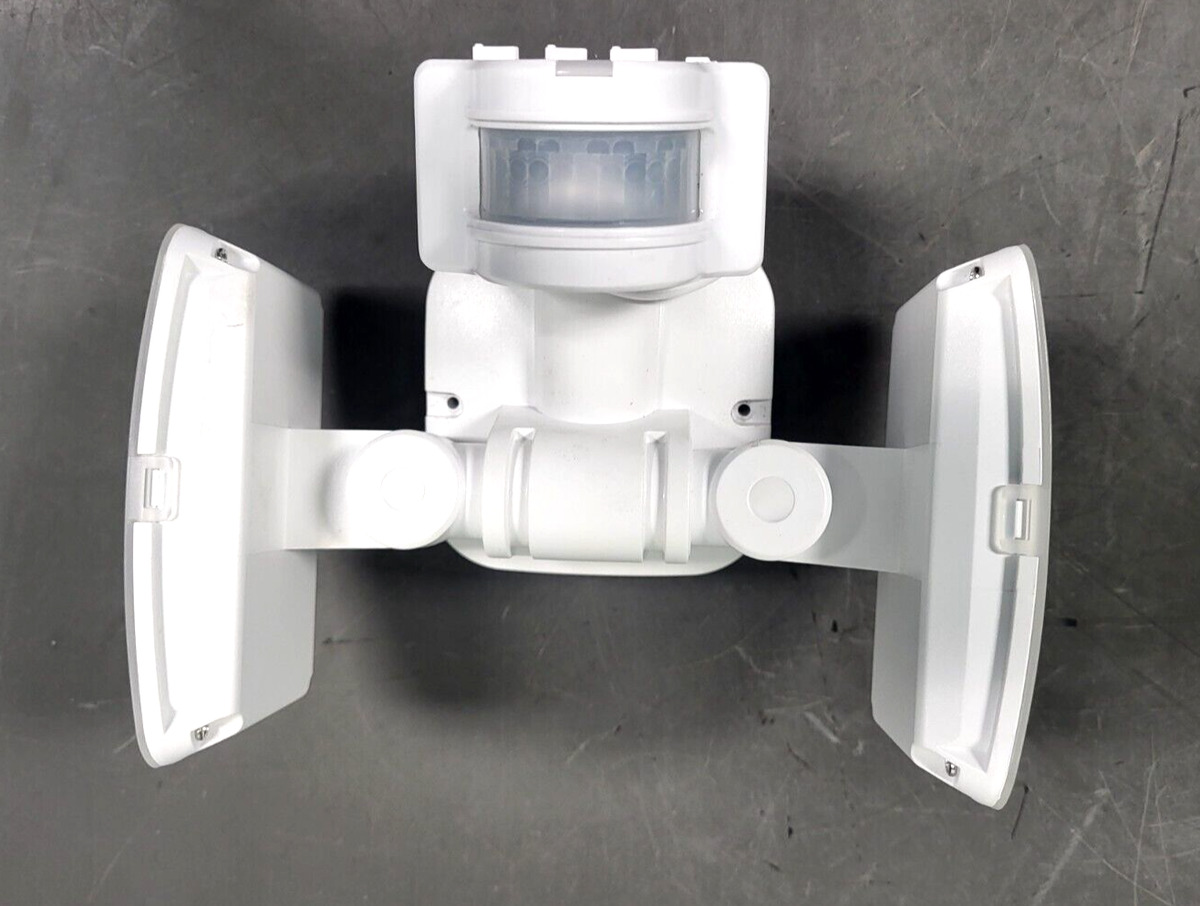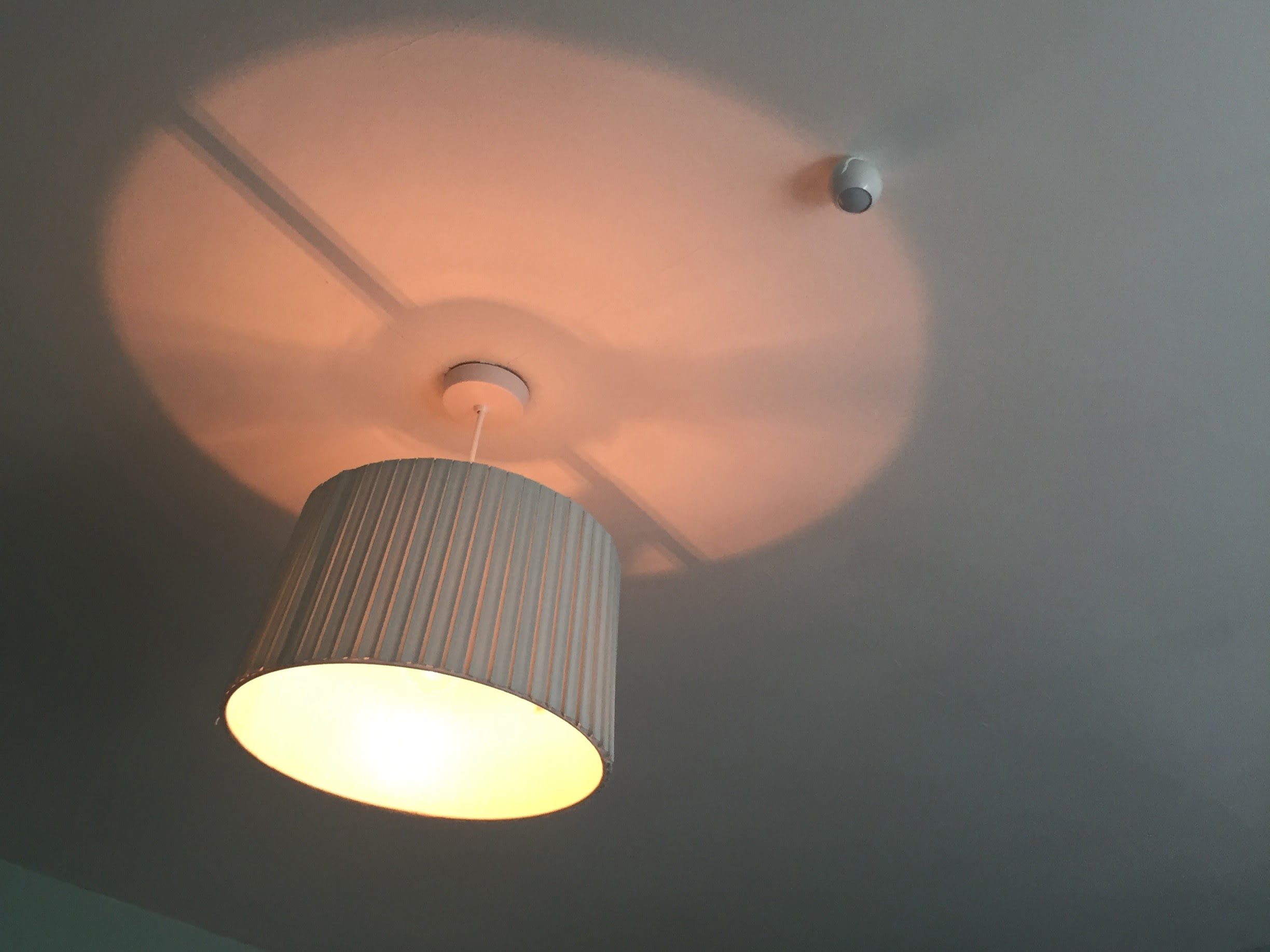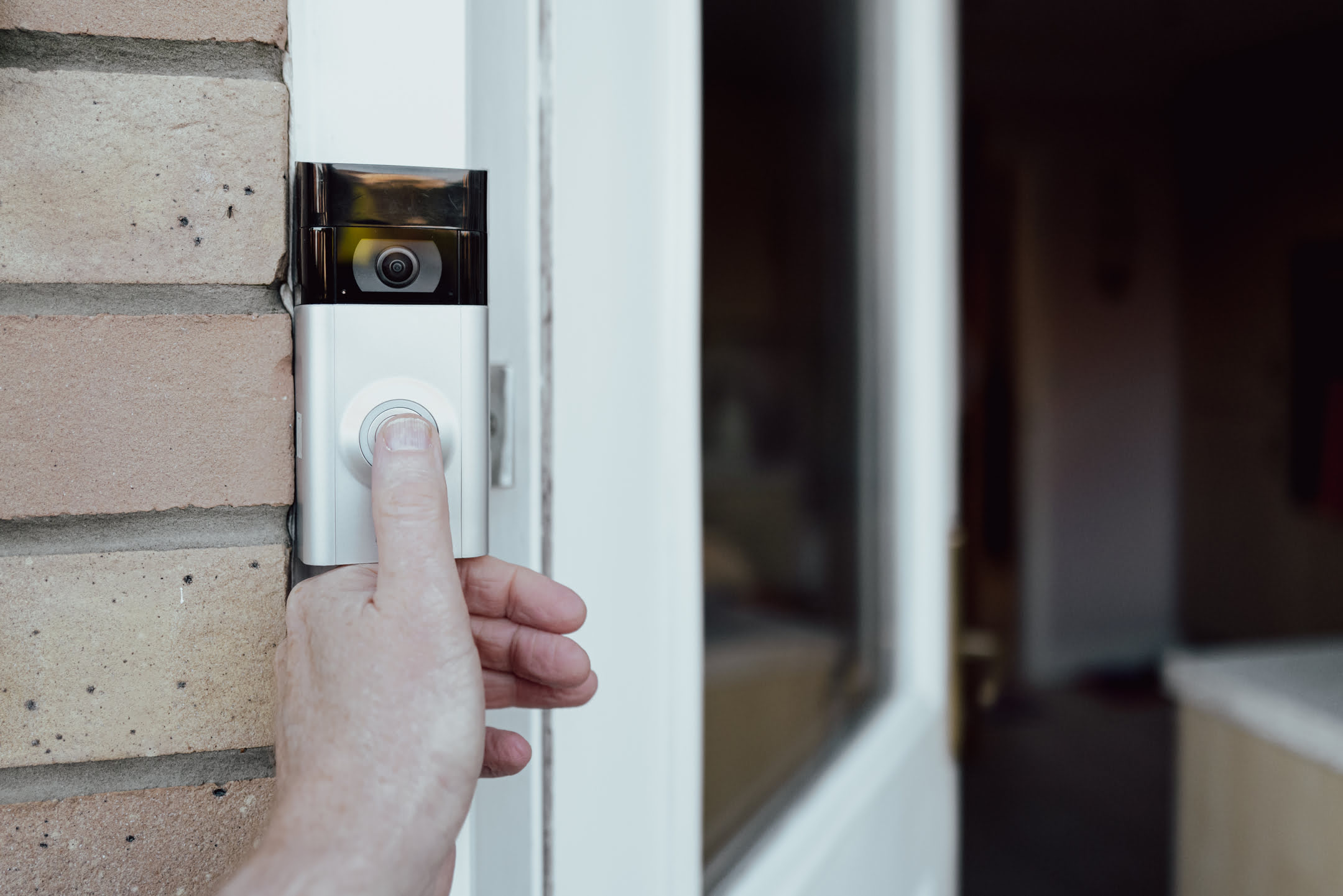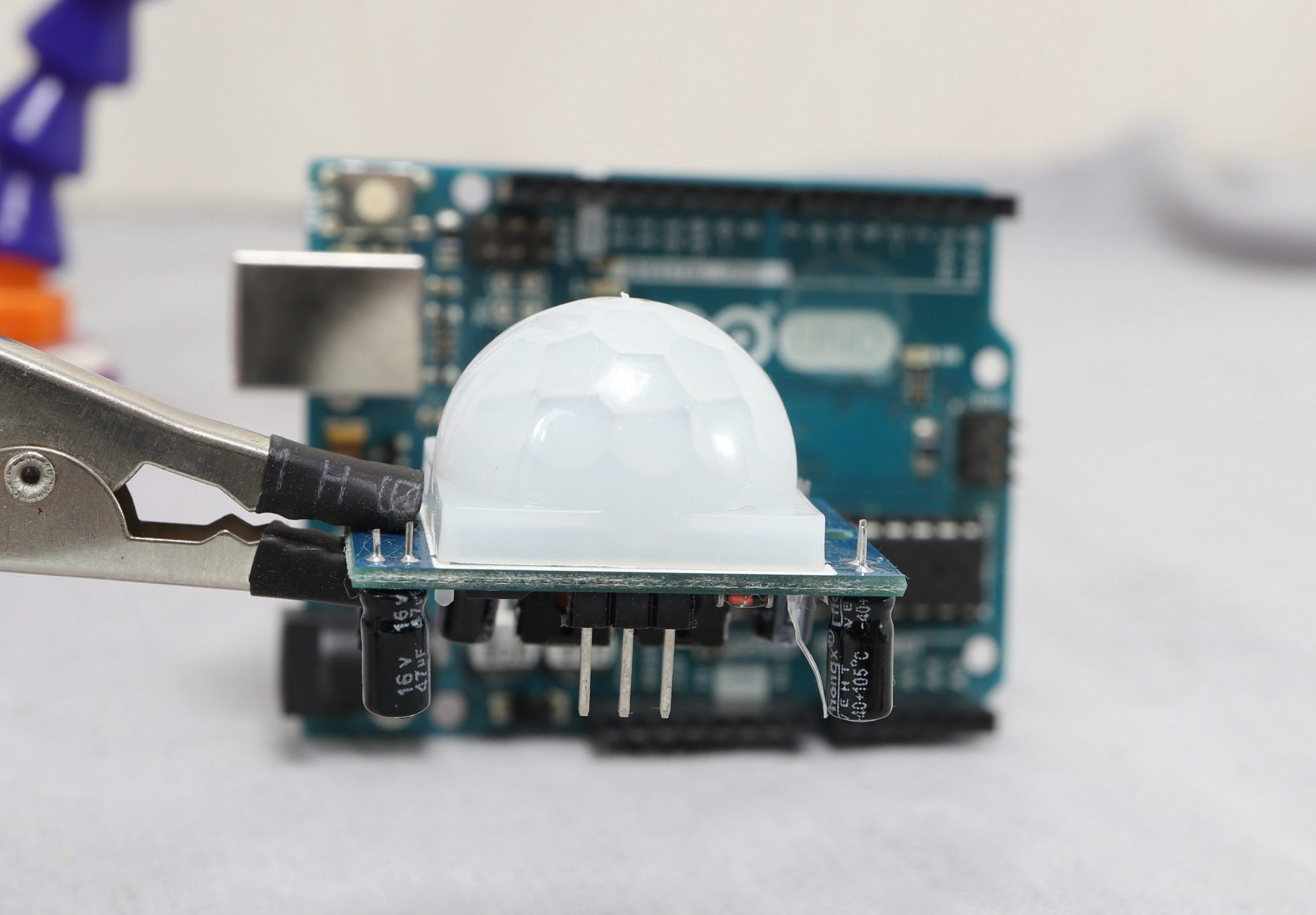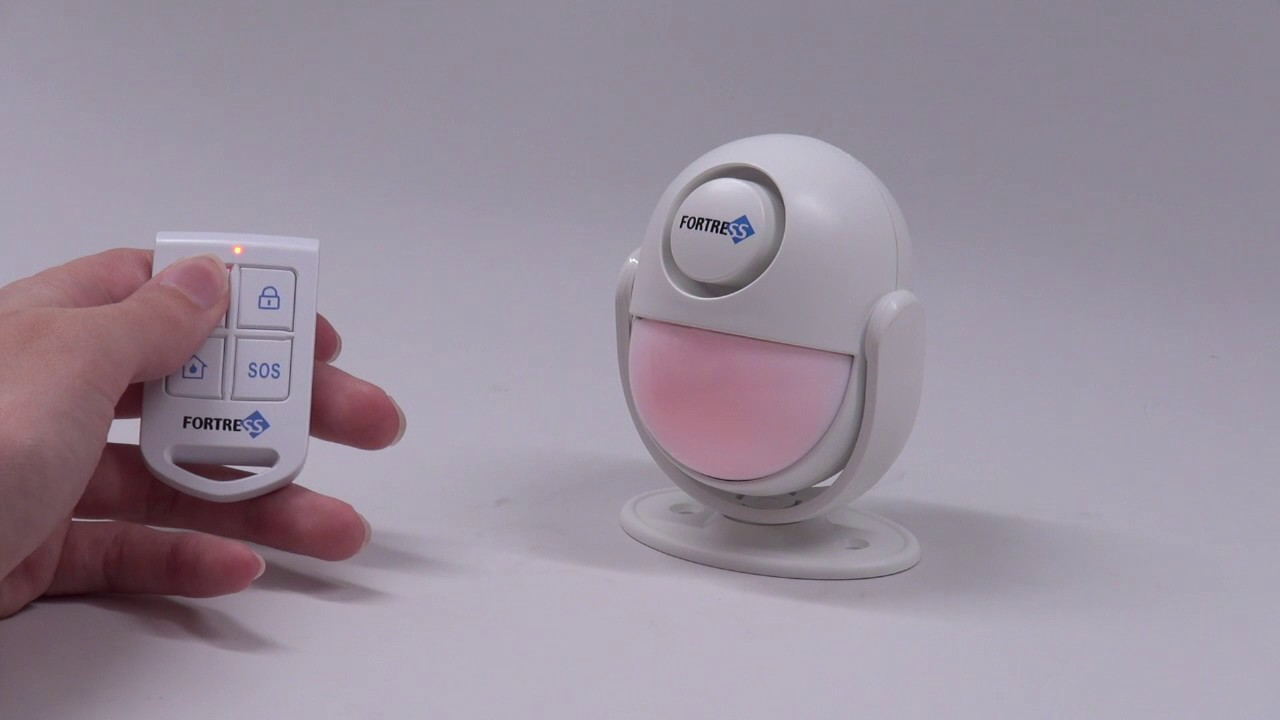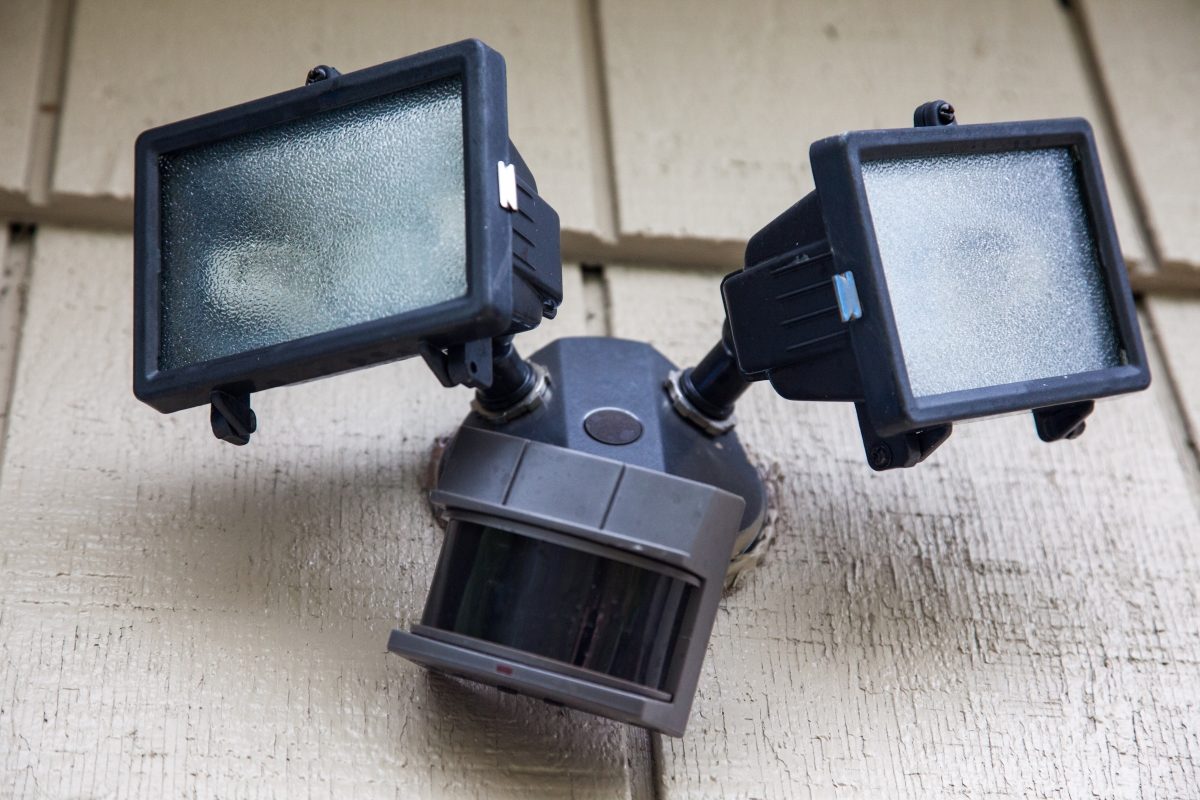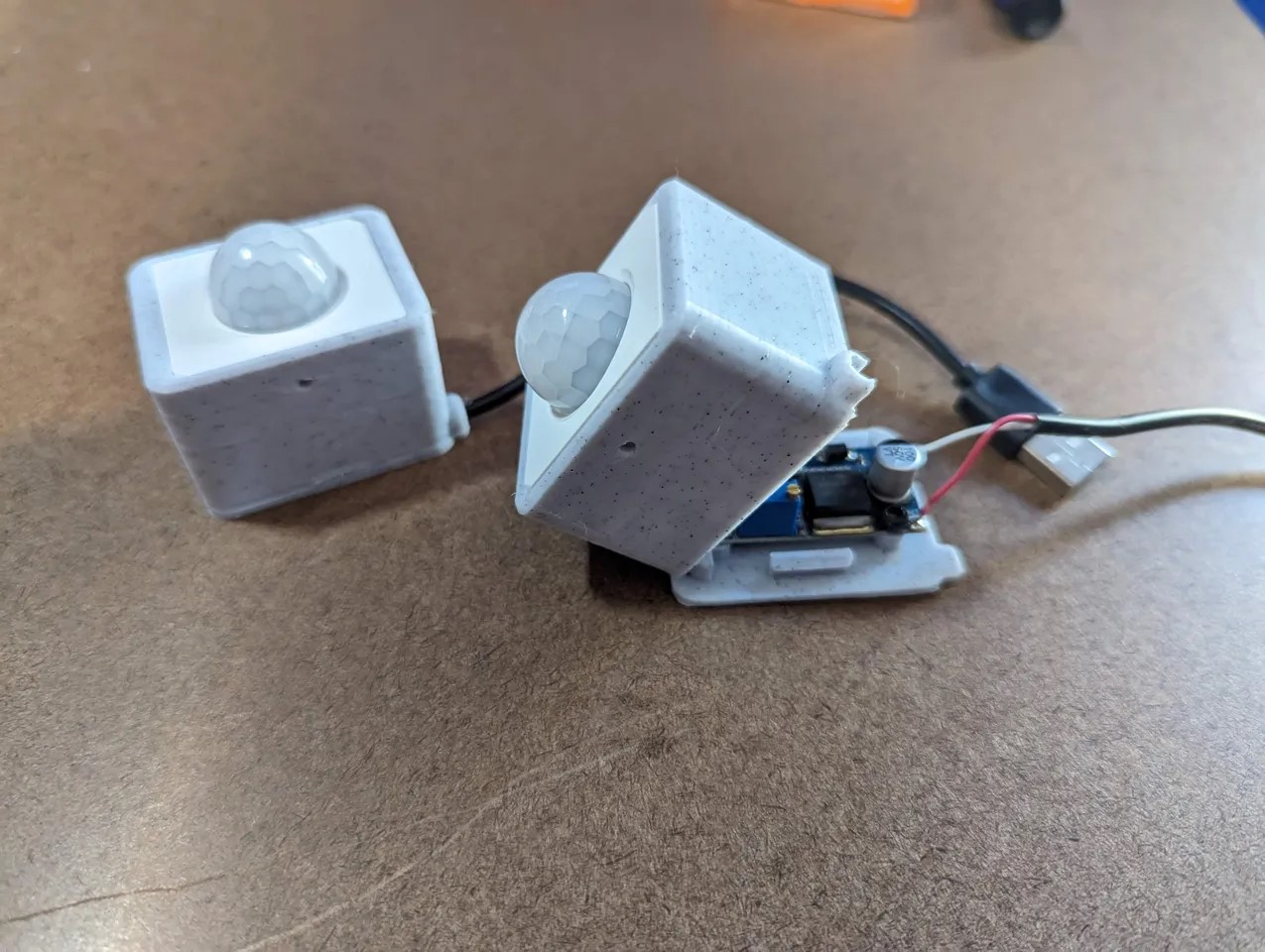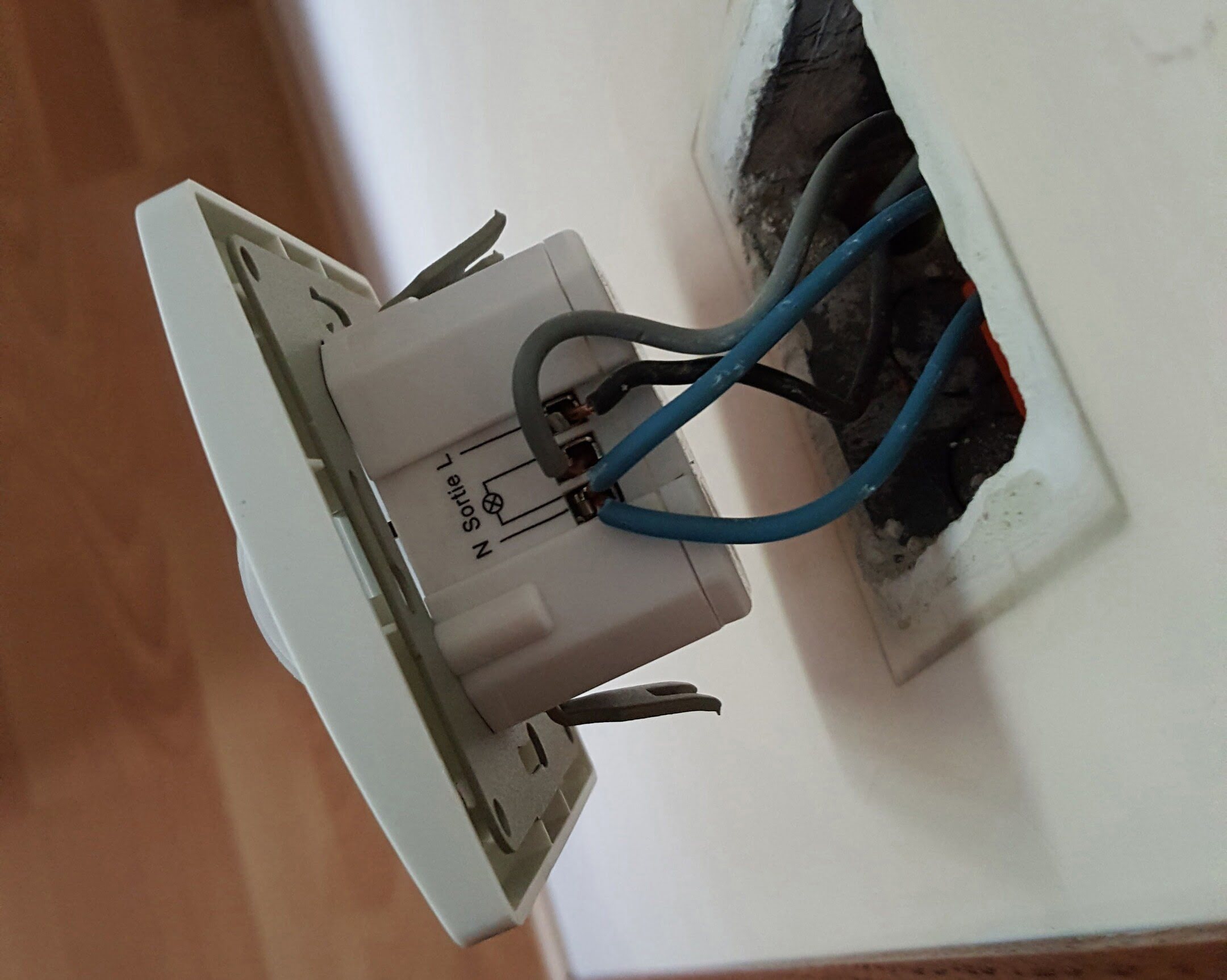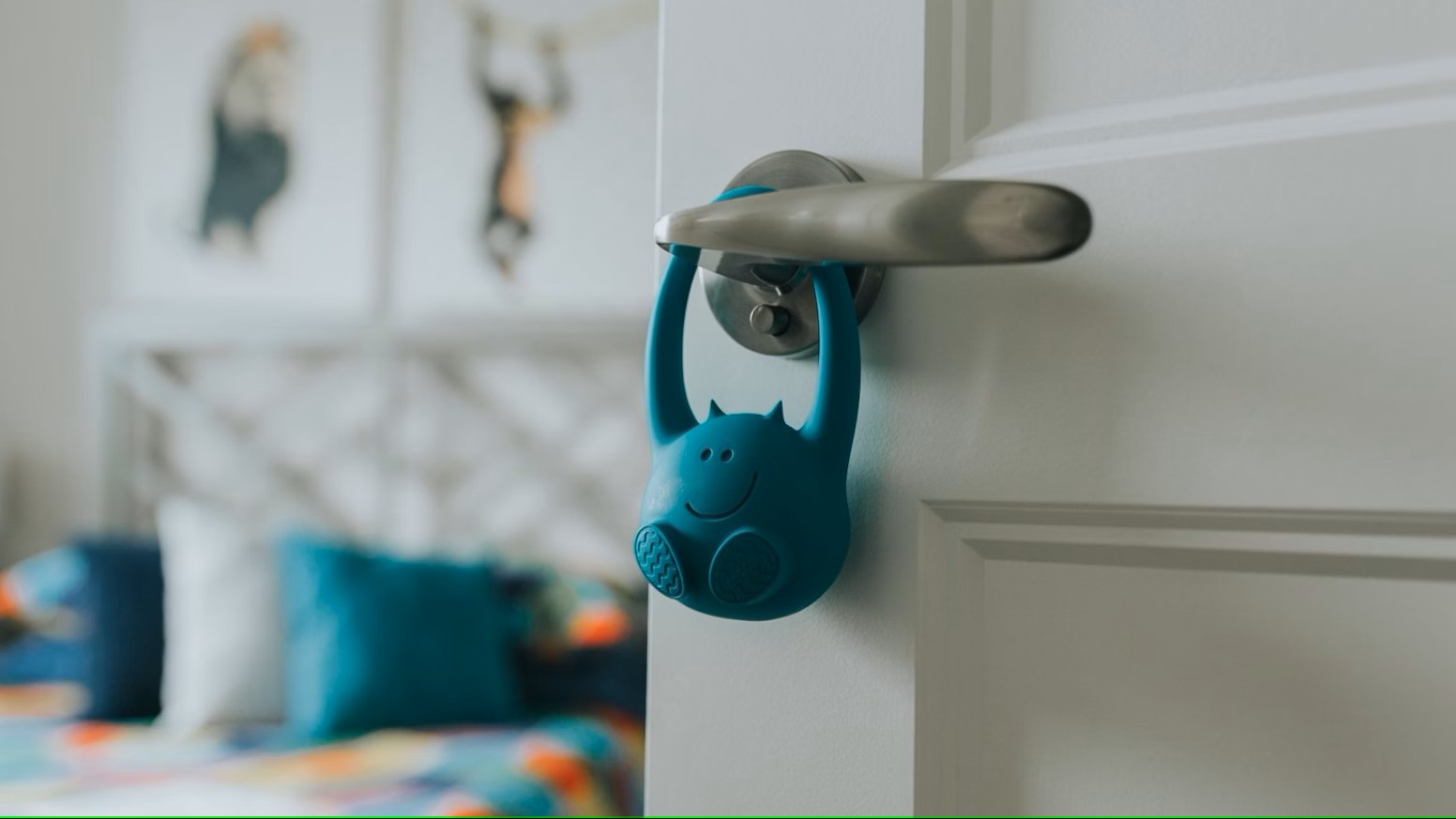Home>Home Security and Surveillance>How To Activate A Defiant Motion Detector Using The THD-MS Manual
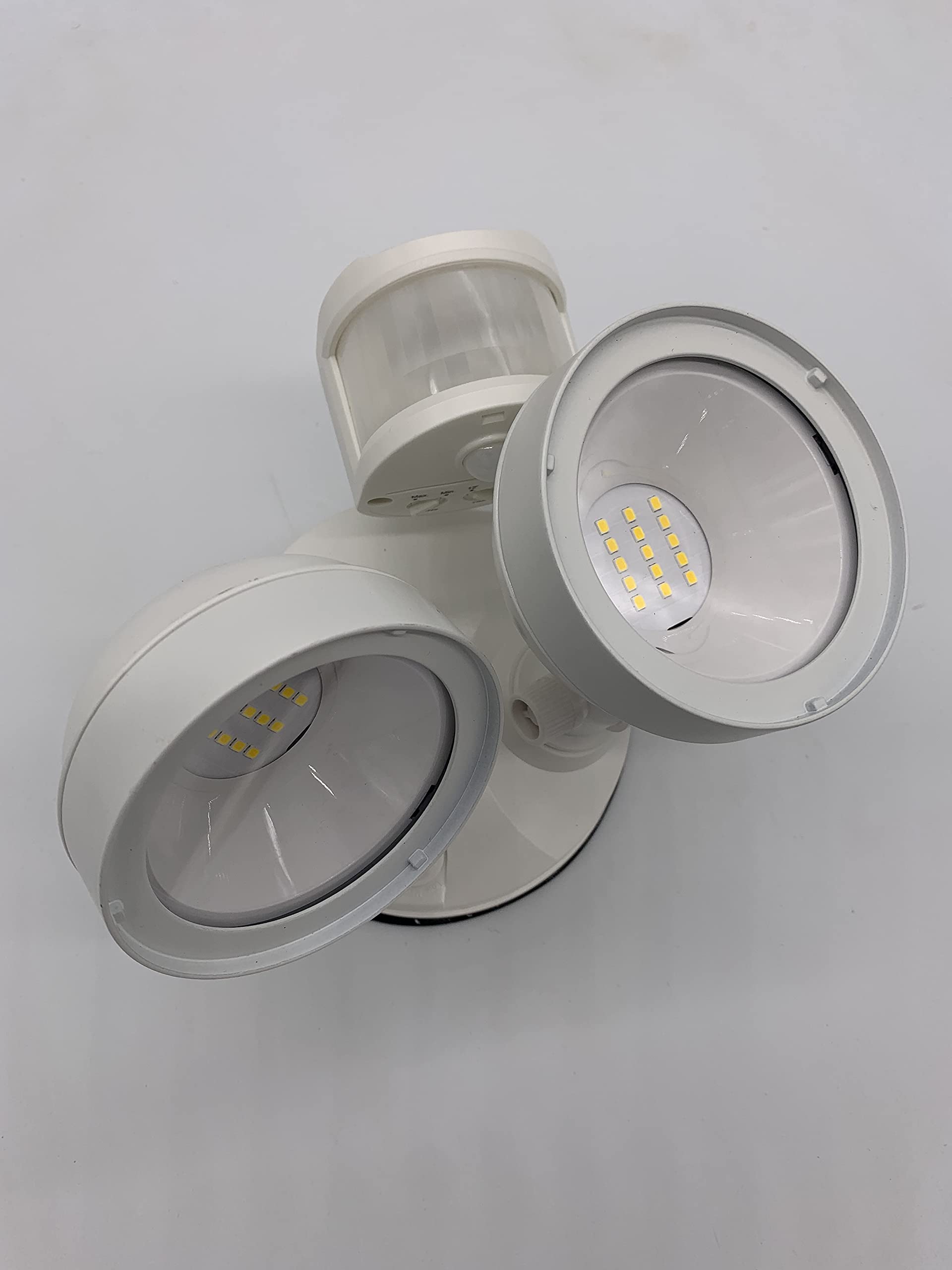

Home Security and Surveillance
How To Activate A Defiant Motion Detector Using The THD-MS Manual
Modified: March 6, 2024
Learn how to activate a Defiant Motion Detector with the user-friendly THD-MS Manual, ensuring optimal home security and surveillance.
(Many of the links in this article redirect to a specific reviewed product. Your purchase of these products through affiliate links helps to generate commission for Storables.com, at no extra cost. Learn more)
Introduction
Welcome to our comprehensive guide on how to activate a Defiant Motion Detector using the THD-MS manual. In today’s world, home security plays a vital role in ensuring the safety of our loved ones and our belongings. With advancements in technology, motion detectors have become a popular choice for homeowners to enhance their security systems.
The Defiant Motion Detector is a highly effective and reliable device that can detect motion in its range and trigger an alarm or alert. Whether you’re a new homeowner or just investing in a motion detector system, this guide will provide you with step-by-step instructions on how to set up and activate the Defiant Motion Detector using the THD-MS manual.
By following the instructions in this guide, you will be able to install and configure your motion detector with ease, ensuring that your home is protected from any unwanted intrusions or suspicious activities. So let’s get started and empower ourselves with the knowledge to activate this powerful security device.
Key Takeaways:
- Activating a Defiant Motion Detector using the THD-MS manual is a crucial step in enhancing home security. Understanding, assembling, mounting, and testing the detector are essential for optimal performance.
- Configuring sensitivity settings and troubleshooting common issues are key to ensuring the reliable functionality of the Defiant Motion Detector. Regular maintenance and testing are important for consistent security.
Read more: How To Activate Motion Detector On A Light
Step 1: Understanding the Defiant Motion Detector (THD-MS)
Before you can successfully activate the Defiant Motion Detector using the THD-MS manual, it’s important to have a good understanding of the device itself. The Defiant Motion Detector is a state-of-the-art security device designed to detect motion within its range and trigger an alarm or alert. It is equipped with advanced infrared technology that can accurately detect even the slightest movement.
The THD-MS model of the Defiant Motion Detector offers various features and settings that can be customized to meet your specific security needs. These settings include sensitivity, range, and alarm duration. Understanding these settings and how they work will allow you to optimize the performance of your motion detector.
The motion detector works by emitting infrared beams and measuring the reflection of these beams to detect any changes in the surrounding environment. When motion is detected, the sensor sends a signal to the control panel, which then activates the alarm or triggers a notification.
It’s important to note that the Defiant Motion Detector is designed for indoor use only, and it should be placed in strategic locations to ensure maximum coverage. Before proceeding with the activation process, take a moment to familiarize yourself with the device’s specifications and documentation to ensure you have a clear understanding of its capabilities.
Additionally, it is suggested to read the THD-MS manual thoroughly, as it contains important information such as installation guidelines, troubleshooting tips, and specific instructions for programming and activating the motion detector.
By gaining a solid understanding of the Defiant Motion Detector and its features, you will be better prepared to proceed with the activation process in the subsequent steps. So let’s move on to assembling the motion detector in the next step.
Step 2: Assembling the Motion Detector
Now that you have a clear understanding of the Defiant Motion Detector, it’s time to move on to the assembly process. Assembling the motion detector is a relatively straightforward process and can be done with a few simple steps.
First, ensure that you have all the necessary components that came with your Defiant Motion Detector package. These components typically include the motion detector unit itself, mounting brackets, screws, and any additional accessories. Check the manual for a complete list of components.
Start by attaching the mounting bracket to the desired location where you want to install the motion detector. Make sure to choose a spot that provides maximum coverage and overlooks the areas you want to monitor.
Using screws or adhesive, securely mount the bracket to the chosen location. Ensure that the bracket is level and stable, as this will determine the accuracy and effectiveness of the motion detection.
Next, carefully attach the motion detector unit to the mounting bracket by aligning the holes on the back of the unit with the corresponding holes on the bracket. Gently slide the unit down until it locks into place. You may need to tighten screws or fasteners to secure the unit firmly.
Once you have assembled the motion detector, ensure that it is tightly secured and doesn’t have any loose parts. A loose unit can lead to inaccurate detection and false alarms. So take a moment to double-check the assembly before moving forward.
After completing the assembly process, it is recommended to refer to the THD-MS manual for any specific instructions related to your model. The manual may provide additional guidelines or recommendations for the assembly process. Familiarizing yourself with the manual will help ensure that you are following the correct procedures.
With the motion detector now assembled and securely mounted, you are ready to proceed to the next step: mounting the motion detector. This step will guide you through the proper positioning of the unit for optimal detection coverage.
Step 3: Mounting the Motion Detector
Mounting the motion detector properly is crucial for its effective performance. In this step, we will guide you through the process of mounting the Defiant Motion Detector to ensure optimal coverage and accurate motion detection.
Before mounting the motion detector, it’s important to consider a few factors. First, determine the areas you want to monitor and prioritize them based on their importance. Common areas include entry points, hallways, and main living spaces. Identify the ideal location where the motion detector will have the best visibility and coverage.
Once you have identified the location, ensure that there are no objects or obstructions that could interfere with the detector’s line of sight. Remove any furniture, plants, or decorations that may obstruct the motion detector’s field of view.
Using the mounting brackets provided with the Defiant Motion Detector, carefully position the bracket on the wall or ceiling as per the manual’s instructions. Mark the screw holes using a pencil or marker for accurate positioning.
Next, using a drill, create pilot holes at the marked screw hole positions. This will make it easier to insert the screws during the mounting process.
Align the mounting bracket with the pilot holes and securely attach it to the wall or ceiling using screws or other fasteners specified by the manufacturer. Make sure the bracket is level and firmly attached to ensure stability.
With the mounting bracket in place, it’s time to attach the motion detector unit. Align the unit with the bracket and carefully slide it into place, ensuring that it locks securely. If your motion detector requires additional fasteners, follow the manufacturer’s instructions to attach them.
Once the motion detector is mounted, test its position by moving around the monitored area. Ensure that the detector accurately detects your movements and triggers the appropriate alarm or notification.
It is worth noting that the ideal mounting height for a motion detector is typically between 6 to 8 feet above the ground. This height allows for the maximum coverage and detection accuracy.
After you have successfully mounted the motion detector, refer to the THD-MS manual for any additional instructions or guidelines specific to your model. The manual may provide further recommendations on mounting techniques or troubleshooting tips.
Congratulations! You have now successfully mounted the Defiant Motion Detector and are ready to proceed to the next step: configuring the sensitivity settings to customize the detection capabilities of the motion detector.
Make sure the motion detector is in “Test” mode. Then, walk in front of the sensor to activate it. If it doesn’t work, check the batteries and the sensor’s position.
Step 4: Configuring Sensitivity Settings
Configuring the sensitivity settings of your Defiant Motion Detector is crucial to ensure that it accurately detects motion while minimizing false alarms. In this step, we will guide you through the process of adjusting the sensitivity settings to optimize the performance of your motion detector.
Begin by referring to the THD-MS manual to understand the specific sensitivity settings available for your model. Different models may offer varying options, such as low, medium, and high sensitivity levels. It’s important to select the right sensitivity level based on your specific needs.
Most motion detectors have a default sensitivity setting, which you can use as a starting point. However, depending on your environment, you may need to adjust the sensitivity to cater to specific factors like pets, foliage, or ambient lighting conditions.
To configure the sensitivity settings, access the control panel or interface of your motion detector following the instructions provided in the manual. Look for the sensitivity options or settings menu.
First, try setting the sensitivity level to the default setting and test its performance. Walk around the monitored area and observe if the motion detector accurately detects your movements without triggering any false alarms. If you notice false alarms or missed detections, you may need to adjust the sensitivity further.
It’s important to find the right balance where the motion detector is sensitive enough to detect actual intrusions but not overly sensitive to detect movements from small pets or environmental factors.
If you’re dealing with false alarms caused by ambient lighting or moving foliage, you may have to adjust other settings, such as the detection range or the placement of the motion detector, to minimize these interferences.
Remember to test the sensitivity settings in different scenarios, such as during different times of the day or with varying lighting conditions. This will give you a comprehensive understanding of how the motion detector responds in different situations.
Keep in mind that finding the optimal sensitivity settings may require some trial and error. It’s important to be patient and make small adjustments until you achieve the desired detection performance.
Once you have configured the sensitivity settings to your satisfaction, carefully save or lock the settings to prevent accidental changes in the future. Refer to the manual for instructions on how to save or lock the settings specific to your model.
With the sensitivity settings properly configured, your Defiant Motion Detector is now ready to accurately detect and report any motion or suspicious activities in your monitored area. In the next step, we will guide you on how to perform a thorough test of your motion detector to ensure its reliability and functionality.
Step 5: Testing the Motion Detector
Testing your Defiant Motion Detector is a crucial step to ensure its reliability and functionality. A thorough test will help you verify that the motion detector accurately detects motion and triggers the appropriate alarm or notification. In this step, we will guide you through the process of testing your motion detector.
Before beginning the test, ensure that all installation and configuration steps have been completed correctly. Double-check the power supply and connectivity of the motion detector to ensure it is functioning properly.
Start by positioning yourself in the area that the motion detector is monitoring. Walk around within the detection range of the motion detector, ensuring that you pass through all areas that should trigger a detection.
Observe whether the motion detector immediately detects your movement and triggers the intended response, such as sounding an alarm or activating a notification on your control panel or connected devices.
Pay attention to any delay or lag in the detection time. If there is a noticeable delay, you may need to adjust the sensitivity settings or consider repositioning the motion detector to improve its performance.
Continue walking around the monitored area, simulating different scenarios, such as fast movements, slow movements, and movements at varying distances from the motion detector. This will give you a comprehensive understanding of the motion detector’s capabilities.
If you have multiple motion detectors installed, make sure to test each one individually to ensure that they all function properly and don’t interfere with each other’s detection.
While performing the test, also pay attention to any false alarms caused by environmental factors or interference. Adjust the sensitivity settings as needed to minimize such false alarms.
If you encounter any issues or inconsistencies during the testing process, consult the troubleshooting section of the THD-MS manual for guidance. It may provide solutions to common issues and help you address any problems you encounter.
Remember to document any findings or observations during the testing process. This information will be useful for future reference and can help in troubleshooting or optimizing the performance of your motion detector.
Once you have completed a thorough testing process and are satisfied with the performance of your motion detector, you can proceed with the final step: troubleshooting common issues. This step will equip you with the knowledge to handle any issues that may arise in the future.
Step 6: Troubleshooting Common Issues
Even with proper installation and configuration, it’s natural to encounter occasional issues with your Defiant Motion Detector. In this step, we will discuss some common issues that may arise and provide troubleshooting tips to help you resolve them.
1. False Alarms: If you are experiencing frequent false alarms, first check the sensitivity settings. Lowering the sensitivity level can help reduce false detections caused by small pets or environmental factors. Additionally, ensure that the motion detector is not facing any objects that may cause reflections or movements, such as curtains or hanging plants.
2. Missed Detections: If the motion detector is not detecting movement consistently, check for any obstructions that may be blocking its line of sight. Ensure that there are no large objects or furniture obstructing the detection area. You may also consider adjusting the mounting angle or repositioning the motion detector for better coverage.
3. Connectivity Issues: If the motion detector is connected to a control panel or other devices and is experiencing connectivity issues, check the wiring or wireless connection. Make sure all cables are securely connected and that there are no loose connections. If using wireless connectivity, ensure that the motion detector is within range of the connected devices and that there are no interference sources nearby.
4. Power Supply Problems: If the motion detector is not turning on or is experiencing intermittent power supply, check the power source. Ensure that the batteries are installed correctly and have sufficient charge. If using a wired connection, ensure that the power supply is stable and uninterrupted.
5. Inconsistent Performance: If the motion detector’s performance is inconsistent, consider resetting the device to its factory settings. Follow the instructions in the THD-MS manual to perform a reset. Additionally, check for any firmware updates or software upgrades that may improve the device’s performance.
If you have tried troubleshooting common issues but are still experiencing problems with your Defiant Motion Detector, consult the manufacturer’s customer support or technical assistance. They can provide further guidance or assistance in resolving any persistent issues.
Remember, maintaining regular maintenance and periodically checking the performance of your motion detector can help prevent or quickly address any issues that may arise. By troubleshooting common issues, you can ensure that your motion detector remains reliable and provides effective security for your home.
With the troubleshooting step complete, you have successfully completed the process of activating your Defiant Motion Detector using the THD-MS manual. Congratulations on enhancing your home security system and providing greater peace of mind for you and your loved ones.
Remember to refer to the THD-MS manual for specific instructions and guidelines related to your model. Additionally, keep the manufacturer’s contact information handy for any further assistance or support you may require in the future.
Thank you for following this comprehensive guide. Wishing you a safe, secure, and protected home environment!
Conclusion
In today’s world, ensuring the safety and security of our homes is of paramount importance. Activating a Defiant Motion Detector using the THD-MS manual is a crucial step towards enhancing the security system in your home. By following the comprehensive steps outlined in this guide, you have gained the knowledge and skills necessary to install, configure, and troubleshoot your motion detector.
We began by establishing a clear understanding of the Defiant Motion Detector, its features, and how it operates. Then, we walked through the assembly process, ensuring that all components were securely in place. Properly mounting the motion detector in strategic locations was discussed, allowing for optimal coverage and detection capabilities.
Configuring the sensitivity settings was a pivotal step in fine-tuning the motion detector’s accuracy and minimizing false alarms. Testing the motion detector in various scenarios helped ensure its reliability and functionality, while troubleshooting common issues equipped you with the skills needed to address any challenges that might arise.
With these steps completed, you can now enjoy enhanced home security with the Defiant Motion Detector. Remember to regularly maintain and test your motion detector to ensure its consistent performance and reliability. The safety and security of your loved ones and your home should always be a top priority.
We hope this comprehensive guide has empowered you with the knowledge and confidence to activate your Defiant Motion Detector using the THD-MS manual. Should you encounter any difficult situations or concerns, refer back to the manual or seek assistance from the manufacturer’s customer support.
Thank you for investing your time and effort into securing your home. With a properly activated Defiant Motion Detector in place, you can now enjoy a greater sense of peace, knowing that you have taken important steps towards protecting your property and ensuring the safety of your loved ones.
Stay vigilant, stay safe, and may your home always be a haven of security.
Frequently Asked Questions about How To Activate A Defiant Motion Detector Using The THD-MS Manual
Was this page helpful?
At Storables.com, we guarantee accurate and reliable information. Our content, validated by Expert Board Contributors, is crafted following stringent Editorial Policies. We're committed to providing you with well-researched, expert-backed insights for all your informational needs.
